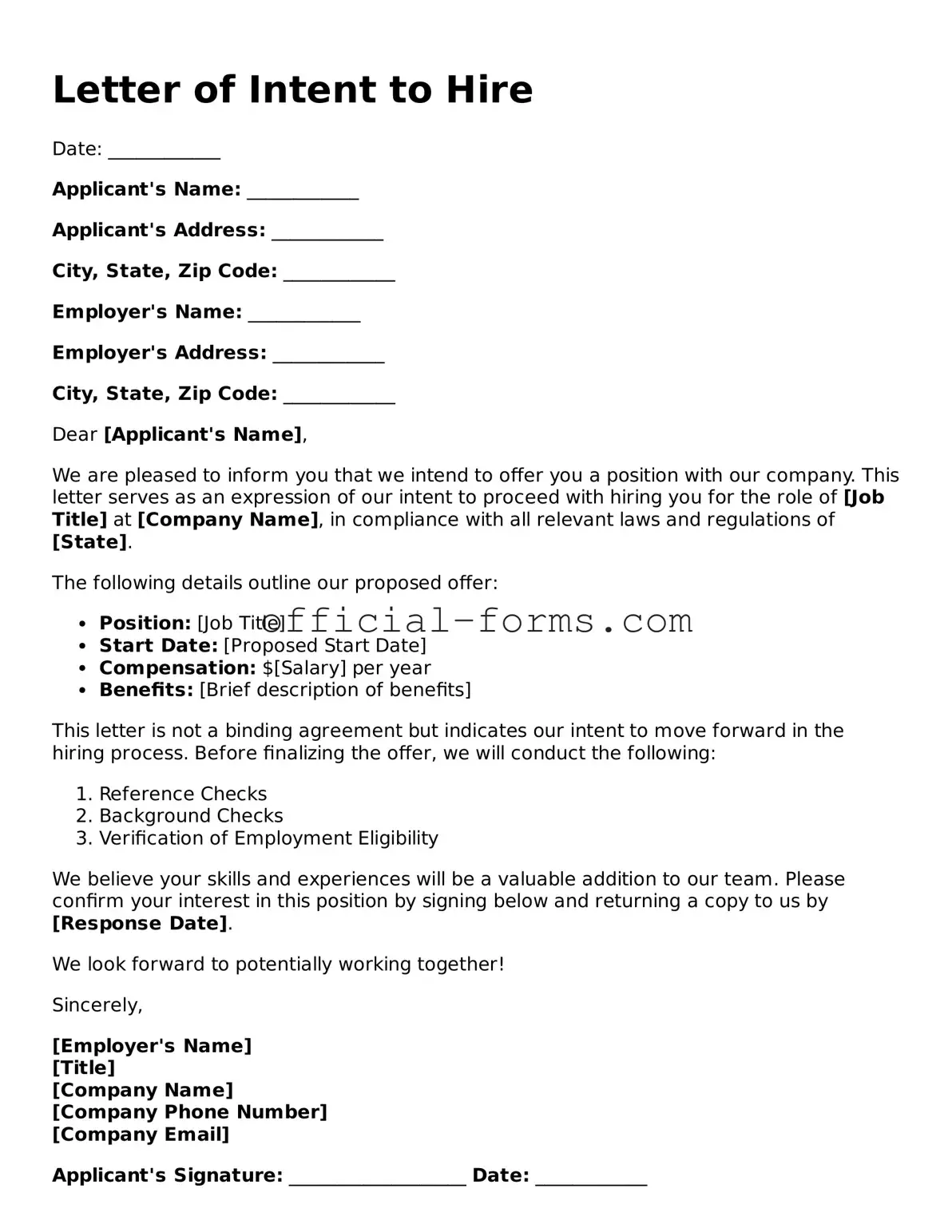Attorney-Verified Letter of Intent to Hire Template
The Letter of Intent to Hire form is a document that outlines an employer's intention to hire a candidate for a specific position. This form serves as a preliminary agreement, detailing the terms of employment and expressing the employer's commitment to the candidate. It helps both parties understand the expectations and next steps in the hiring process.
Open My Letter of Intent to Hire Now
